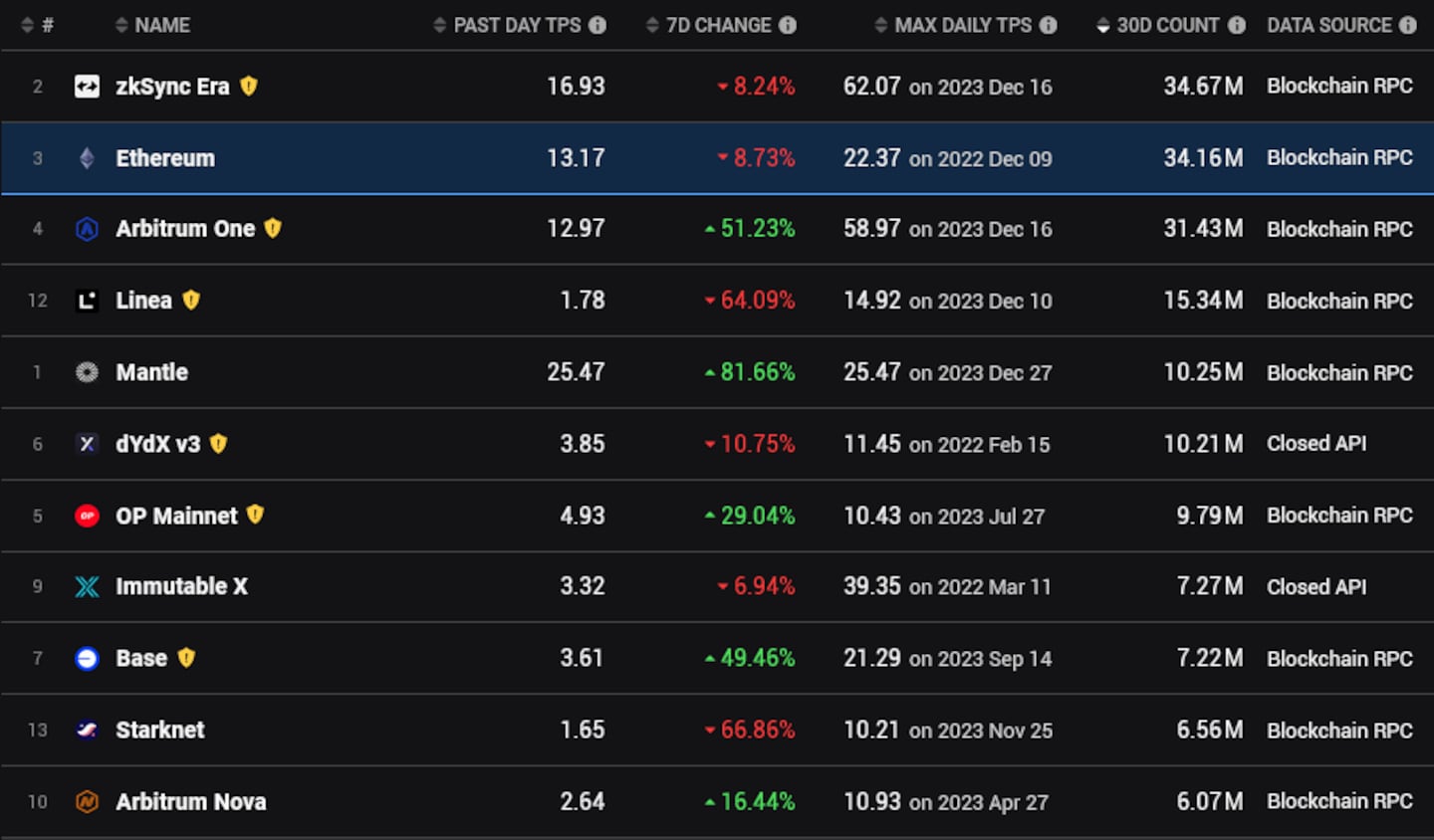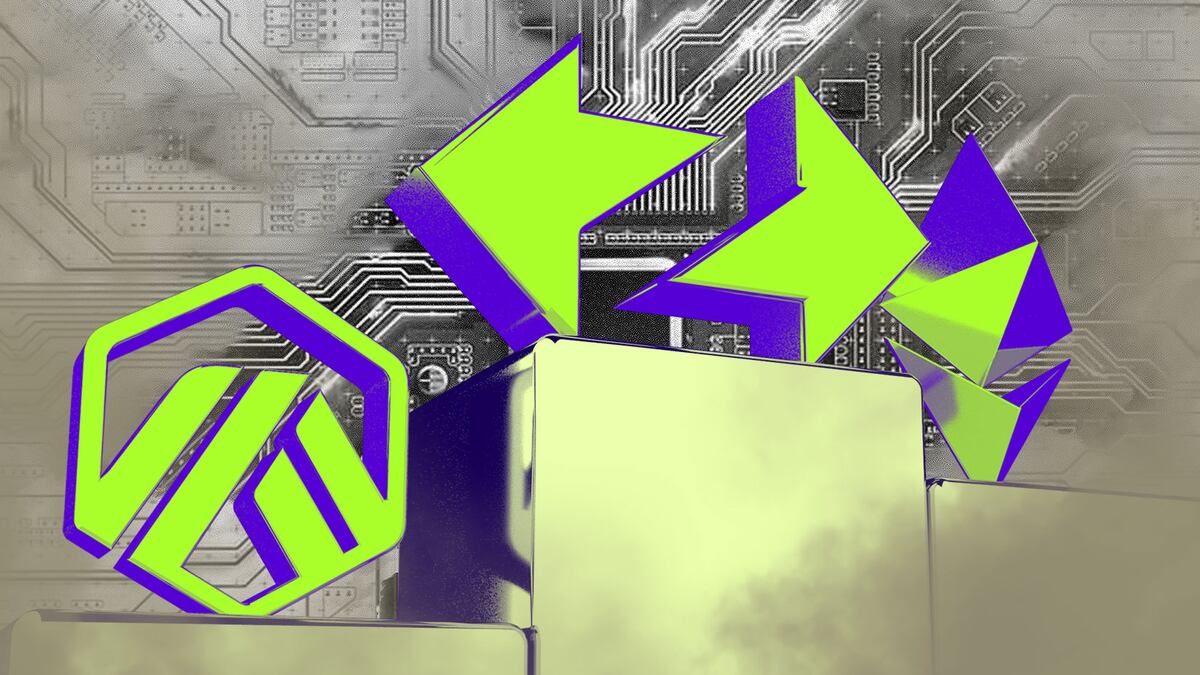- Ethereum has been upstaged by one of its layer 2s in 30-day transaction count.
- ZkSync’s transaction spike has resulted in lower fees.
- Development is positive step for Ethereum's scalability.
Ethereum has been knocked off its perch, at least when it comes to the monthly number of transactions.
ZkSync, an Ethereum layer 2 blockchain, has managed to process more transactions than Ethereum in the last 30 days, according to data from L2Beat, a portal that tracks data for such buzzy blockchains.
It’s quite a feat because it is the first time Ethereum has been surpassed by any of its layer 2s in 30-day transaction numbers.
Ethereum layer 2 blockchains like zkSync help scale the blockchain with increased speed while relying on the mainnet’s security.

It’s also significant that the transaction spike has not resulted in higher fees on zkSync. Instead, fees have dipped 44% within the same period, data from blockchain analytics portal growthepie shows.
It currently costs about $0.13 to use the network to send tokens while it is $2 on the Ethereum mainnet. More complicated transactions like token swaps cost even higher, as much as $35 as of the time of reporting.
This fee decline supports the expectation that zkSync should become cheaper to use as it scales.
ZkSync’s run to the top of the ladder has come amid a boom in inscriptions on Ethereum-based blockchains.
Inscriptions are data files for applications like NFTs and meme coins embedded on blockchains in a way that is supposed to be cheaper than using smart contracts.
They first emerged on Bitcoin but have now become a trend on Ethereum-based blockchains.
Transaction-spamming associated with the inscriptions trend has become a stress test for blockchains like zkSync and Arbitrum with the latter going offline on December 15.
The milestone also comes after zkSync had a minor hiccup on Christmas. Block production was paused amid a temporary network outage for the blockchain.
The developers behind zkSync said the problem was due to a bug in the chain’s server and promised a full post-mortem of the incident. Some security researchers say the issue may have involved the blockchain’s Sequencer.
ZkSync uses a Sequencer to verify, organise, and bundle transactions to Ethereum for finality. Layer 2 Sequencers have been prone to faults in the past with Arbitrum, a zkSync suffering a similar fate in June.
Apart from Inscriptions, zkSync’s transaction count also has a prominent airdrop footprint. Matter Labs has been mum about the possibility of an airdrop, but that has not stopped DeFi users from piling into the chain in hopes of a potential airdrop win.
Osato Avan-Nomayo is our Nigeria-based DeFi correspondent. He covers DeFi and tech. To share tips or information about stories, please contact him at osato@dlnews.com.


